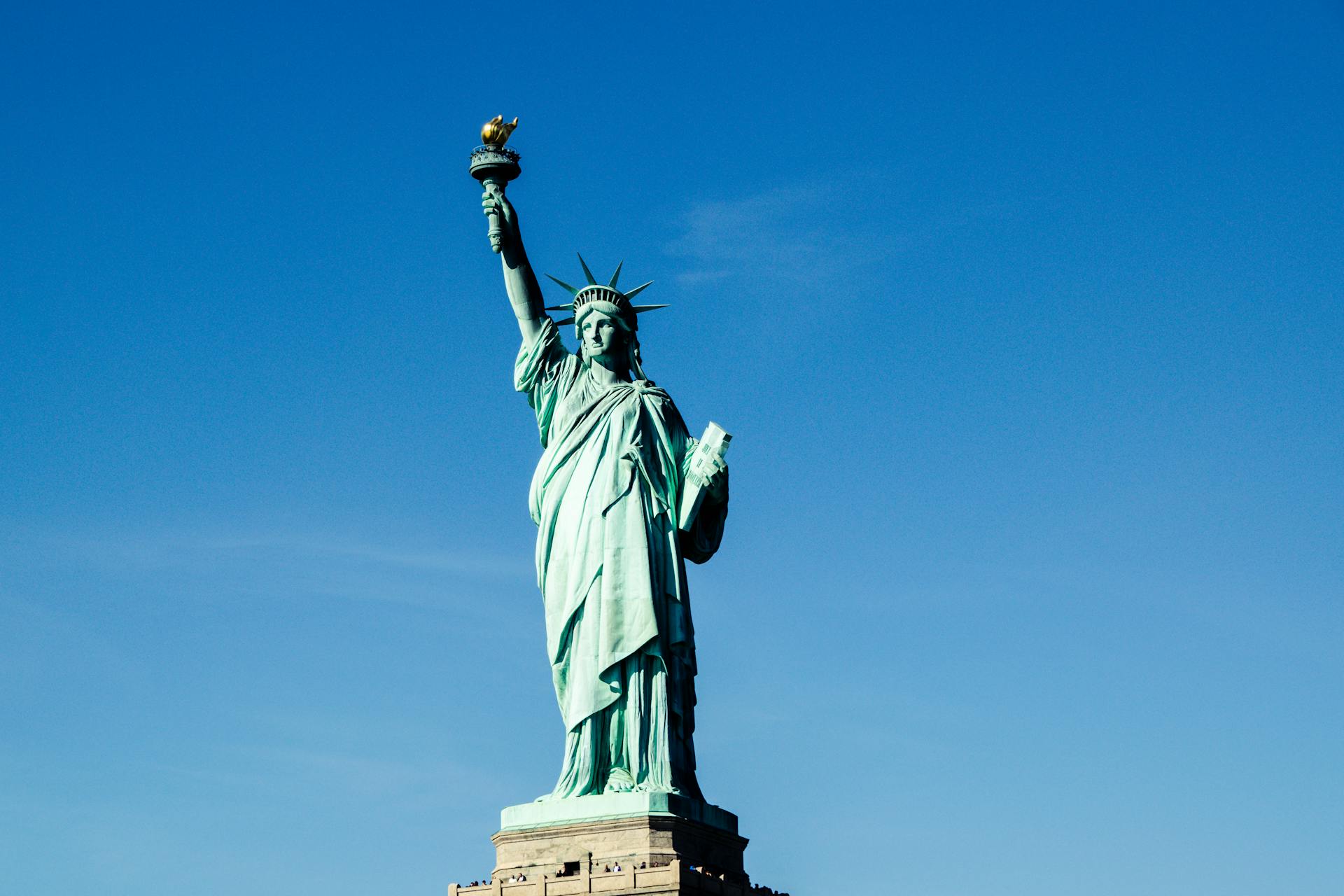
The US government used Liberty Bonds to finance its war efforts, and propaganda played a significant role in selling these bonds to the public.
The Liberty Bond campaign was a massive undertaking, with over 1.5 million posters distributed across the country.
These posters featured patriotic imagery and slogans, such as "We Must Have Money to Fight the War" and "Buy a Bond Today."
The government also used celebrities to endorse Liberty Bonds, including movie stars and sports heroes.
These endorsements were often featured in newspapers and magazines, helping to build public support for the war effort.
Intriguing read: What Is Government Bonds and Securities
The Hun
The "Hun" figure was a common trope in American print culture during World War I, often depicted as a skulking, hunched figure with black skin.
This portrayal of the "Hun" was meant to evoke fear and hatred in the viewer, as seen in Fred Strathmann's poster, which features a blood-dripping "Hun" with green greedy eyes peering towards America.
The "Hun" figure was used to represent the enemy, and by depicting it in a menacing and racialized manner, the poster aimed to inspire the viewer to buy Liberty Bonds to "Beat Back the Hun" and preserve the safety of the nation.
The use of the "Hun" figure in propaganda posters was a way to create a sense of urgency and danger, implying that if the enemy was not defeated, America's future could be one of destruction and chaos.
The "Hun" figure was often depicted in a way that was meant to be disturbing and unsettling, as seen in Strathmann's poster, where blood drips from the "Hun's" bayonet and hands.
Here are some key characteristics of the "Hun" figure in American print culture during World War I:
- Racialized portrayal: The "Hun" was often depicted with black skin.
- Skulking, hunched posture: The "Hun" was often shown in a menacing, hunched posture.
- Evoking fear and hatred: The portrayal of the "Hun" was meant to evoke fear and hatred in the viewer.
By using the "Hun" figure in this way, the government and propaganda artists aimed to create a sense of urgency and danger, and to inspire the viewer to take action to support the war effort.
Frequently Asked Questions
What type of propaganda is Americans will always fight for liberty?
This phrase uses the propaganda technique of generalities, promoting a broad and undefined concept that ignores individual differences and nuances. It makes a sweeping statement about all Americans, without considering the complexities of human experience.
Sources
- https://oshermaps.org/exhibitions/great-war/section-2/
- https://blogs.loc.gov/picturethis/2017/02/the-bonds-of-liberty-a-world-war-i-liberty-loan-poster/
- https://www.iwm.org.uk/collections/item/object/25800
- https://publicdomainreview.org/essay/propagating-propaganda/
- https://wam.umn.edu/fight-or-buy-bonds-mobilizing-american-economy-world-war-i
Featured Images: pexels.com


